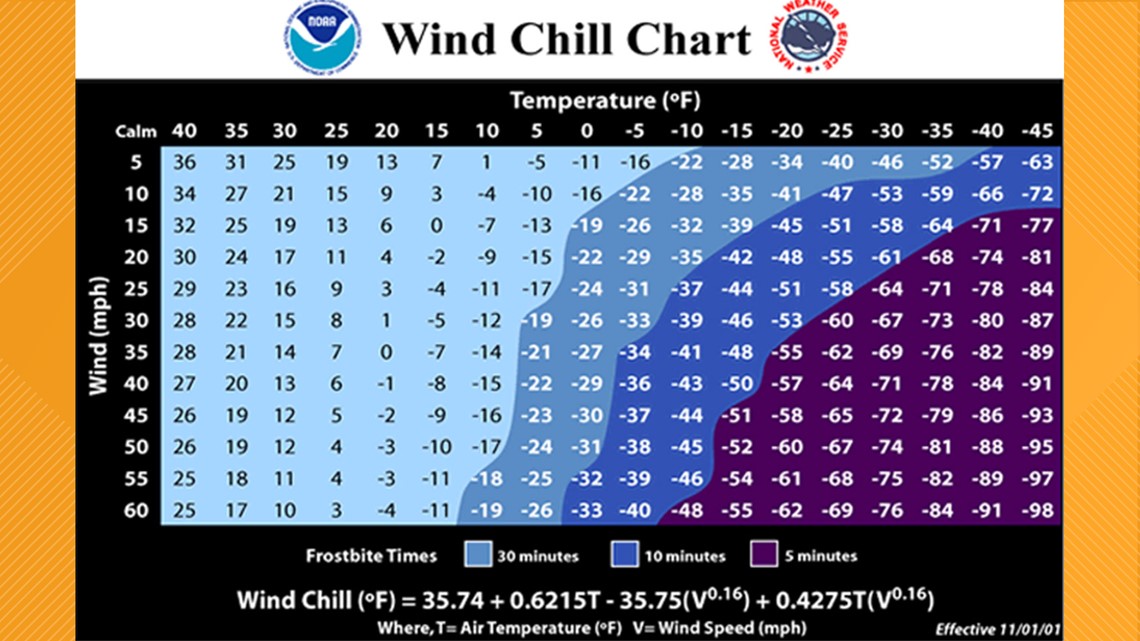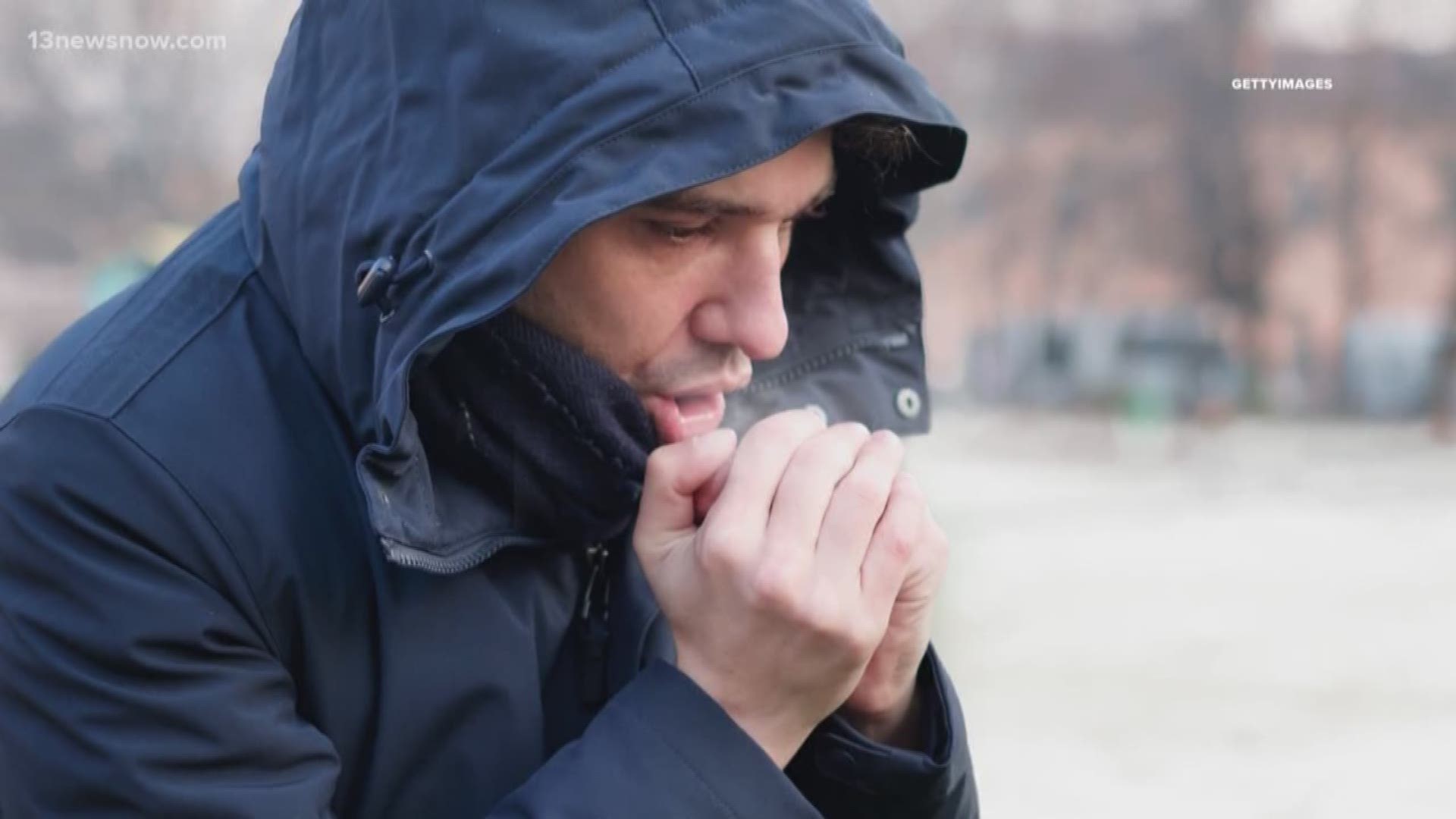NORFOLK, Va. — When the temps fall in the autumn and winter, you may have heard of the wind chill.
Antarctic explorers during World War II developed the concept to assess body heat loss due to wind. The index got an update and improvement in 2001.
The wind chill chart shows the time it may take – based on air temperature and wind speed – for a person to experience cold-related illnesses (hypothermia, frostbite).


People and animals are constantly radiating heat so there is a layer of warmth around every one of us. When Mother Nature cranks up the wind, some of that heat gets transported away.
The body also has a thin layer of moisture above exposed skin. Any wind evaporates that moisture, thus cooling the air above the skin.
Stronger winds speed up those processes, increasing the risk for bodily damage. However, heat can’t be taken from things that don’t produce heat.
So while your coffee cup and plants are affected by the air temperature, people and our furry friends feel the effects of the temperature and wind as a double whammy.
Remember: wind chill is subjective and you'll react differently to certain conditions than your coworkers and family members.
RELATED: SCIENCE BEHIND: How frost forms

